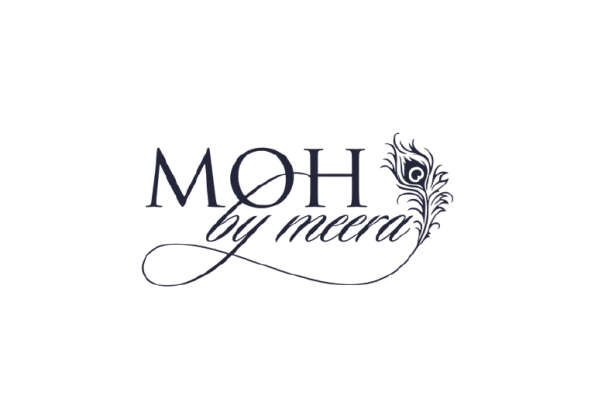THE STORY OF MOH BY MEERA
Our journey began with a simple yet powerful vision - to redefine the way women experience fashion.
Crafted with Love. Woven with Legacy. Moh by Meera is a celebration of Chikankari—an art that has transcended centuries. Rooted in Lucknow’s rich textile heritage and brought to life in Dubai, our pieces are meticulously handcrafted, blending tradition with a contemporary essence. Each garment is more than fashion—it’s a story of resilience, craftsmanship, and luxury.
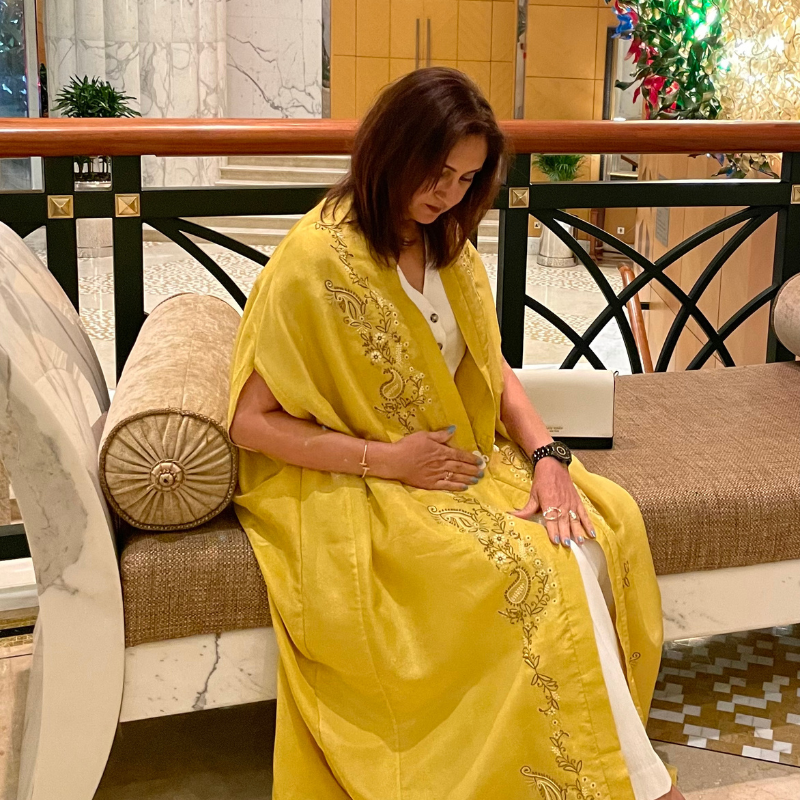
ABOUT
MANISHA MAHESHWARI
A Journey of Strength & Craft
For Manisha, Moh by Meera is deeply personal. As a cancer survivor, she found solace and inspiration in the delicate, meditative art of chikankari. Each handcrafted piece is a tribute to patience, endurance, and beauty.
Today, she brings this ethos into Moh by Meera, ensuring that every design is crafted with emotion, purpose, and the finest artistry.
Moh by Meera is a fashion and lifestyle brand, proudly owned and operated by EcoVogue LLC.
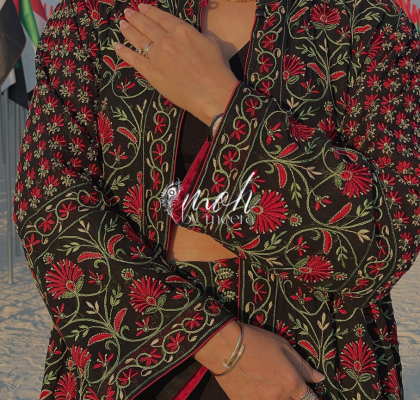
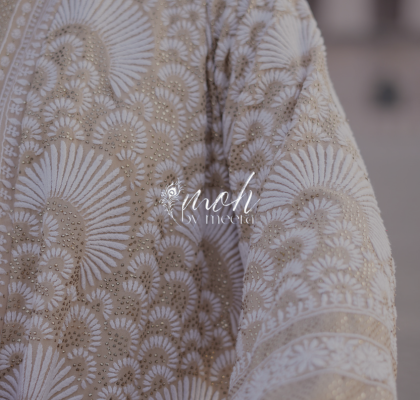
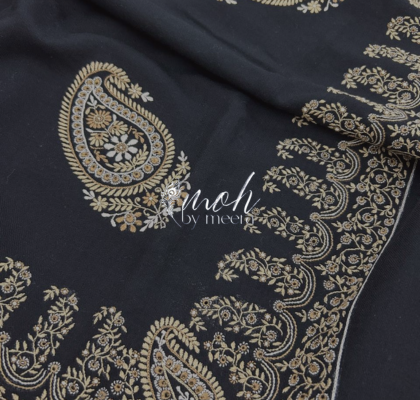


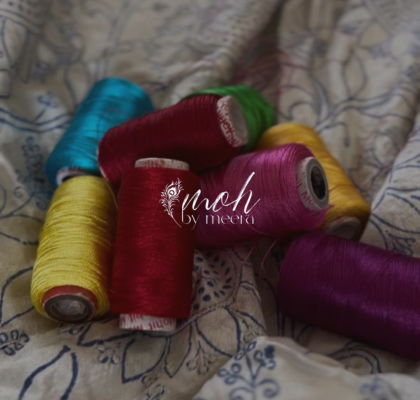
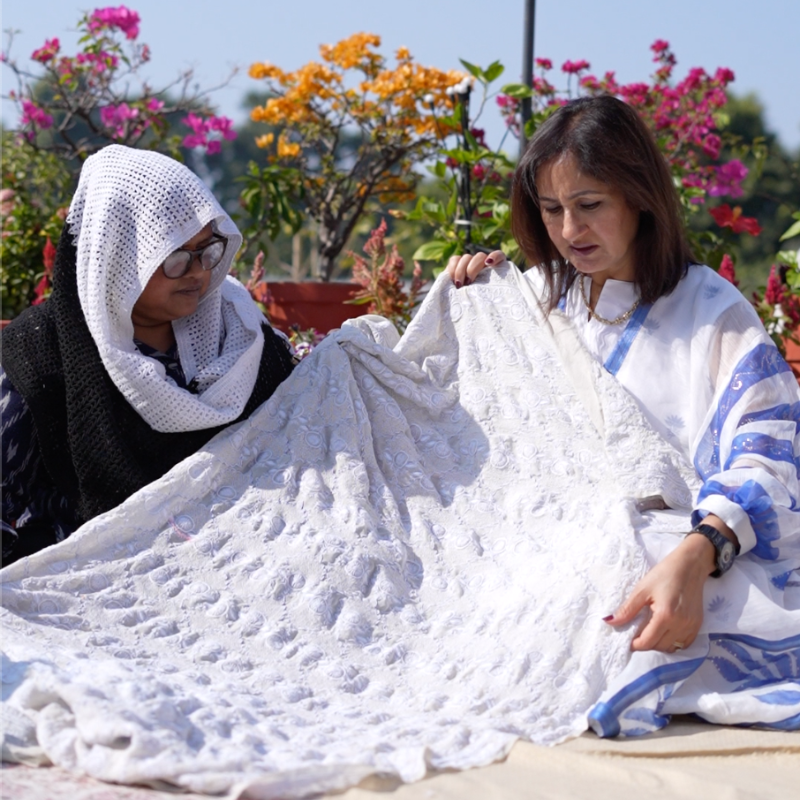
OUR CRAFTSMANSHIP
Chikankari involves multiple embroidery techniques, each adding to the depth and texture of the design. The work is done using a needle, thread, and the following stitches:
• Tepchi: A basic running stitch, worked with six strands of thread.
• Bakhiya: Also known as shadow work, it is done on the reverse side of the fabric, creating a shadow-like effect on the front.
• Phanda: Small, knot-like stitches used to create floral motifs.
• Murri: Similar to Phanda but more intricate, used to depict tiny grains of rice.
• Keel Kangan: The stitch used to decorate the outlines of floral motifs. Jaali: A unique and delicate openwork technique that involves creating a net or mesh effect.
• Hool: A fine stitch that forms a small hole in the fabric, representing petals and leaves.
These stitches are often combined in a single piece to create intricate patterns, usually floral or geometric.
Chikankari involves multiple embroidery techniques, each adding to the depth and texture of the design. The work is done using a needle, thread, and the following stitches:
• Tepchi: A basic running stitch, worked with six strands of thread.
• Bakhiya: Also known as shadow work, it is done on the reverse side of the fabric, creating a shadow-like effect on the front.
• Phanda: Small, knot-like stitches used to create floral motifs.
• Murri: Similar to Phanda but more intricate, used to depict tiny grains of rice.
• Keel Kangan: The stitch used to decorate the outlines of floral motifs.
• Jaali: A unique and delicate openwork technique that involves creating a net or mesh effect.
• Hool: A fine stitch that forms a small hole in the fabric, representing petals and leaves.
These stitches are often combined in a single piece to create intricate patterns, usually floral or geometric.
The making of Chikankari involves several steps:
1. Designing: Artisans first create patterns and motifs that are traced onto the fabric using washable ink or a block-printing method.
2. Embroidery: The traced pattern is then embroidered by hand using various stitches, depending on the design.
3. Washing: Once the embroidery is complete, the fabric is carefully washed to remove any ink or block-print traces.
4. Finishing: After washing, the fabric is starched and ironed to highlight the design.
While traditionally associated with Lucknow, Chikankari has grown beyond its regional boundaries and is now a global fashion statement. Designers incorporate this timeless craft into modern, everyday fashion, blending traditional aesthetics with contemporary cuts. Chikankari is being used in high fashion, casual wear, and home décor, making it versatile.
OUR PROCESS
Made to Order, Made for You
At Moh by Meera, we believe in luxury with patience. Each piece is:
Designed for You
We customise your garment, from embroidery to fit.
Handcrafted with Precision
No machines, just skilled hands and meticulous detail.
A Timeless Investment
A piece that transcends trends, made to last.

